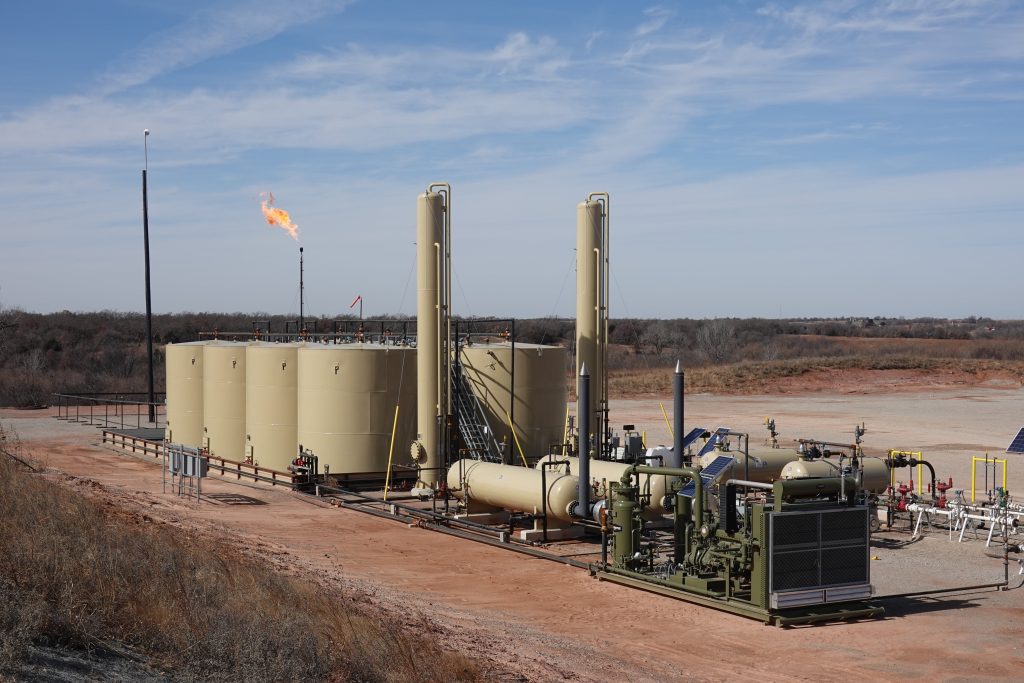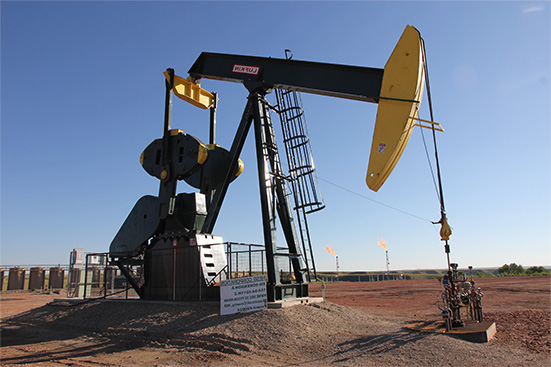
With advancements in domestic oil and gas production, the U.S. has become an energy leader, reducing dependence on imports and providing a strong, predictable investment environment. For qualified oil and gas investors, this shift means greater opportunities, reliable returns, and a secure place to grow wealth.
The Path to U.S. Energy Independence
Over the past two decades, the U.S. has transformed from an energy importer to a global leader in production. New technologies like hydraulic fracturing and horizontal drilling have tapped into vast oil and gas reserves, driving a record surge in domestic production.
- In 2023, the U.S. exported more energy than it imported, marking a historic shift in energy self-sufficiency.
- Crude oil production in the U.S. reached an all-time high of 12.9 million barrels per day, surpassing both Saudi Arabia and Russia.
With this growing energy independence, the U.S. is less vulnerable to global supply disruptions and geopolitical instability, leading to greater investment security and long-term market stability.
How Energy Independence Supports Investment Stability
When a country depends on foreign energy, its market is at risk of supply shocks, price swings, and political instability. However, as the U.S. becomes more self-sufficient, the energy sector grows more predictable and profitable – a major advantage for investors.
- Reduced volatility – With less reliance on imported oil, the U.S. is shielded from sudden price surges caused by geopolitical conflicts.
- Stronger economy – Domestic energy production fuels job growth, economic expansion, and energy security.
- More predictable returns – With steady demand and government support, oil and gas investments offer long-term potential.
For investors, this stable foundation reduces risk and creates consistent opportunities for strong returns.
Why This Matters for Qualified Oil & Gas Investors
Energy independence has opened new doors for investors, particularly in the oil and gas sector. The U.S. government has created a business-friendly environment that encourages domestic energy development, benefiting those who invest in exploration and production.
Key Benefits for Investors:
- Access to high-yield opportunities – With record production levels, domestic oil and gas investments are more rewarding than ever.
- Reduced regulatory risk – Pro-energy policies cut through red tape, making investments smoother and more profitable.
- Stable demand – The world still runs on oil and gas, and demand is projected to remain strong for decades.
With energy in constant demand, the U.S. oil and gas sector offers investors steady cash flow and long-term financial growth.
Contact DW Energy
Want to learn more about oil & gas investing? Our expert team can provide you with more information or schedule a consultation to talk about diversifying your investment portfolio.

The Tax Advantages of U.S. Oil & Gas Investments
One of the biggest advantages of investing in oil and gas is the substantial tax benefits available to qualified investors. These incentives lower the cost of investment and boost returns.
- Intangible Drilling Cost (IDC) Deductions – Investors can deduct 80-100% of drilling costs in the first year, reducing taxable income.
- Depletion Allowance – Similar to real estate depreciation, investors can deduct up to 15% of gross income from oil and gas properties.
- Active vs. Passive Income Offset – Depending on the structure of the investment, certain oil and gas investments can offset active income, further lowering tax liabilities.
These tax breaks boost investor profits, making oil and gas one of the most tax-efficient asset classes.
Generating Passive Income Through Oil & Gas
Energy independence means more drilling, more production, and more opportunities for passive income. Unlike traditional stock investments that fluctuate with market sentiment, oil and gas provide steady revenue streams.
How oil & gas investors earn passive income:
- Direct Participation – Investors receive a share of the revenue from wells in which they own a working interest.
- Royalty Payments – Investors who own mineral rights earn ongoing royalties from production, often lasting decades.
- Dividend Payments – Many established energy companies pay dividends, creating consistent income streams.
Because oil and gas wells can produce for decades, these investments offer long-term, reliable income.
Portfolio Diversification: A Hedge Against Market Fluctuations
Diversifying an investment portfolio is one of the best ways to manage risk. Oil and gas investments provide an excellent hedge against inflation and stock market volatility.
- Low correlation with stocks – Energy assets are driven by supply and demand, not stock market trends.
- Stable demand – The world will always need oil and gas for transportation, manufacturing, and power generation.
- Tangible assets – Unlike digital assets or speculative stocks, oil and gas investments are backed by physical resources with real value.
By adding oil and gas to an investment portfolio, investors gain a stable, income-generating asset that helps balance risk.
Why Now is the Time to Invest in U.S. Oil & Gas
With increasing production, tax benefits, and strong demand, now is a prime time to explore oil and gas investments. Energy independence and a pro-business climate create a unique opportunity for stable, high-yield returns.
At DW Energy Group, we specialize in identifying, developing, and managing the most profitable oil and gas investment opportunities for qualified oil and gas investors. By partnering with experienced operators, we help investors maximize returns while minimizing risk.
Contact dw energy
Sources:
“The United States has been an annual net total energy exporter since 2019,” U.S. Energy Information Administration, https://www.eia.gov/energyexplained/us-energy-facts/imports-and-exports.php
“United States produces more crude oil than any country, ever,” U.S. Energy Information Administration, https://www.eia.gov/todayinenergy/detail.php?id=61545
“EIA projections indicate global energy consumption increases through 2050, outpacing efficiency gains and driving continued emissions growth,” U.S. Energy Information Administration, https://www.eia.gov/pressroom/releases/press542.php
